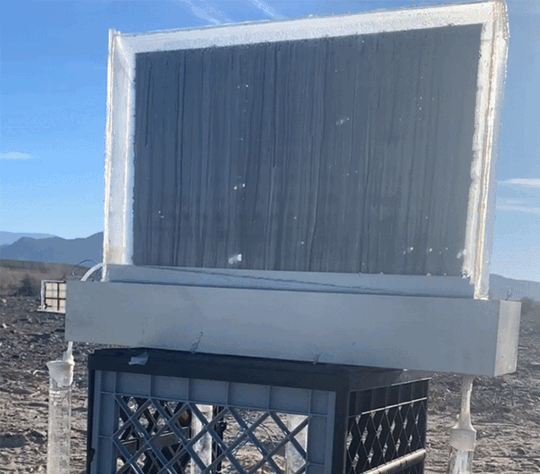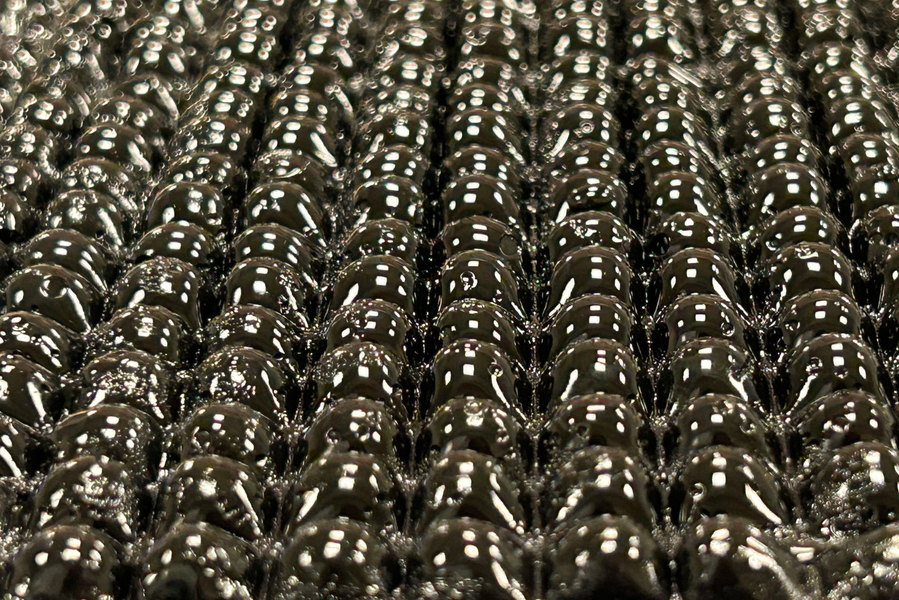Window-Sized Device Taps the Air for Safe Drinking Water

By Science Correspondent
Innovators at Massachusetts Institute of Technology (MIT) are tapping into an abundant and often overlooked source of clean drinking water—the air around us.
As pressure mounts on traditional water supplies like rivers and reservoirs, a new solution is emerging that could transform access to safe water for millions, including the 2.2 billion people worldwide who currently go without.
The Earth’s air holds trillions of gallons of water vapor. If efficiently captured, this vapor could provide clean drinking water where conventional resources are scarce.
With that aim, the MIT team has developed and tested a new atmospheric water harvester that works even in arid conditions like Death Valley.
The black, window-sized device consists of a hydrogel panel enclosed in a glass chamber coated with a cooling layer.
The hydrogel resembles black bubble wrap, expanding as it absorbs vapor and shrinking as water is released. Vapor condenses on the glass and flows through a tube as clean, drinkable water—no electricity, solar power, or batteries required.

In tests, the panel produced up to 160 milliliters (about ⅔ cup) per day, even in desert air with just 21% humidity.
Arrays of these panels could potentially supply entire households, especially in temperate and tropical climates where humidity is higher.
“We’ve built a meter-scale device that can function in resource-limited regions—even where solar panels aren’t viable,” says Xuanhe Zhao, MIT professor of mechanical and environmental engineering.
How It Works
The device uses hydrogels—soft, porous materials known for absorbing moisture. MIT’s version includes glycerol, which stabilizes the salt embedded in the hydrogel to enhance water absorption without contaminating the collected water. This innovation solves a common issue in similar designs, where salt leakage can make water unsafe to drink.
The team also reshaped the gel into small domes, increasing surface area and absorption efficiency. A cooling polymer film on the chamber helps vapor condense and flow into a simple collection system.
Field Testing and Performance
During a seven-day trial in Death Valley, the device consistently harvested water—between 57 and 161.5 milliliters daily—across humidity levels from 21% to 88%.
It outperformed other passive and some powered water-harvesting devices in similar conditions.
“This is a proof-of-concept,” says co-lead researcher Will Chang Liu, now at the National University of Singapore. “We’re working on next-gen materials and multipanel systems to scale up household-level water supply.”
Zhao envisions arrays of vertical hydrogel panels deployed in remote or drought-stricken areas. Their compact footprint and low cost make them ideal for resource-limited environments.
This research was supported by the MIT J-WAFS Water and Food Seed Grant, the MIT–Chinese University of Hong Kong program, and the UM6P–MIT collaborative research initiative.
If you have a positive story or uplifting news to share, we’d love to hear from you!
Just email us at news@goodnewspost.co.uk.
Whether it's a local hero, an act of kindness, or a personal win, your story could help spread joy and improve someone’s mental health. Let’s make the world a little brighter, one good news story at a time.
And don’t forget—you can sign up for free to get the latest feel-good stories straight to your inbox!





